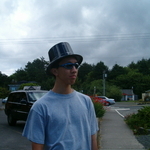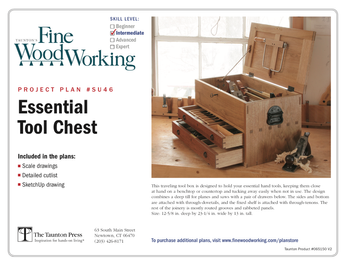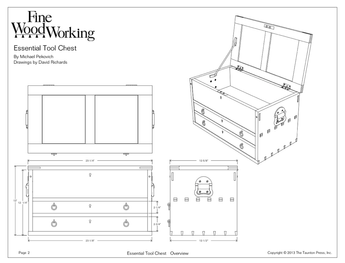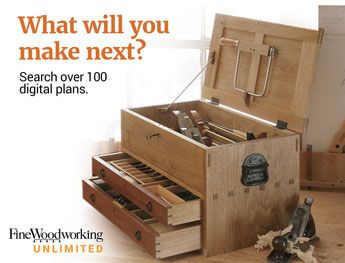I was turning between centers yesterday with a spur center and a live center. To install the billet, I set it between the two points, locked the tailstock down, and used the handwheel to advance the live center to drive the billet into the spur center. It required quite a bit of force (I had to tighten the tailstock by beating on the lever with a 2×4 to prevent it from slipping) but I was finally able to get the spurs engaged enough so that I could take a decent cut with a roughing gouge without stopping the workpiece.
After truing up the blank (90 sec), I touched the live center and burned myself badly. It took about 10 minutes for the metal to cool down enough to hold. What puzzles me is that the live center was rotating the entire time as it should be, so there was no friction between the wood and center. The only thing unusual that I noticed was that the lathe would stop as soon as I turned the power off. Normally, the lathe coasts to a stop over a few seconds. Was I doing something wrong?
Chris @ www.flairwoodwork.spaces.live.com
– Success is not the key to happines. Happiness is the key to success. If you love what you are doing, you will be successful. – Albert Schweitzer
















Replies
Looks to me like you put so much stress on the bearings in the live center that the bearings themselves weren't turning freely. The better way to put hard woods on a spur is to remove the spur from the lathe, tap it into the end of the billet, making sure you don't damage the end of the taper (no steel hammer) and then position spur and wood between the centers. If it is very hard, shallow saw kerfs across the end of the billet can give it a head start. I don't think the tail stock and the bearings in a ball bearing center are made to be used for driving the centers into the wood.
I have filed a notch into one blade of the drive spur, so I can be sure I return the wood in the same orientation.
Too ridiculous for words You will damage both the headstock bearings and the livecentre bearings .The hand wheel is for HANDS.To mount your wood either cut a cross to start the centre and /or remove the centre and drive it with your best carving mallet!!!!!! Where is the Flair???
Jako,
I used a mallet to lock the TAILSTOCK down and advanced the handwheel with my hand.Chris @ http://www.flairwoodwork.spaces.live.com
- Success is not the key to happines. Happiness is the key to success. If you love what you are doing, you will be successful. - Albert Schweitzer
My apologies I misread your post. But please heed the advice of others re excess pressure on the headstock/livecentre.We turn fairly large billets (up to 8' between centres)at fair speeds for hours and the centre only gets slightly warm.When the bearings start to fail and whine they get hot.In fact our centres do have thrust bearings contrary to what has been stated earlier. We also pay a lot for them . Jako
I was turning some Olive yesterday and it is pretty hard. I stand on the back side of my band saw and cut an X kerf for the spur drive and 3/64 pilot holes for the points. Lathes and live centers don't have thrust bearings.
Work Safe, Count to 10 when your done for the day !!
Bruce S.
Chris ,
The bearing in the live center may have been compromised when it got so hot and under perhaps too much pressure.
I also use a little back type saw to cut the relief in the headstock end of the work piece for the spurs to seat down into , do you ?
Consider using a center screw on the head stock in conjunction with the live center .
dusty
Chris,
I won't repeat what other's have said. But you should not have to use that much force to lock the tailstock. My tailstock slips now and then. When it does, I clean it and adjust the screw on the locking lever. That fixes it.
A live center will get hot from spinning. Ever touch a wheel bearing aftr you've driven for a while? Even my metal lathe live center gets hot after running it for a while. So it's not unusual. How long were you turning before you finished?
Len
"You cannot antagonize and influence at the same time. " J. S. Knox
Len,
I was turning for about half an hour. I'll clean my bed as well.Chris @ http://www.flairwoodwork.spaces.live.com
- Success is not the key to happines. Happiness is the key to success. If you love what you are doing, you will be successful. - Albert Schweitzer
Yes, you were loading the bearings. Next time superglue a quarter-inch pad of softer stuff to the drive end of the billet and you will be able to snuck it up just tight enough to drive.
Mufti & all,
The idea of scabbing on a softwood block is a good one. Upon further examination of the spur center, I noticed that the spurs were blunt, so I sharpened them on the bench grinder. I will also start kerfing the end of the block.Chris @ http://www.flairwoodwork.spaces.live.com
- Success is not the key to happines. Happiness is the key to success. If you love what you are doing, you will be successful. - Albert Schweitzer
the older turning books use "live center" to mean the powered center. The tail-stock center is innert, without power, not live.
Tom
I don't have any old turning books, but in current usage (and by "current" I mean within at least the last 30-40 years or so), both live and dead centers are used to support a workpiece, but not drive it. The difference is that the live center contains bearings, so that the center rotates with the stock (that's what makes it "live"), as opposed to a dead center, which does not rotate (which is why it's "dead").
A center at the headstock end that induces the rotation of the workpiece is a drive center.
A quick Google search of the first dozen or so hits on "live center" lathe fails to turn up anything that could be used to drive a workpiece.
I'd be curious to learn of any reference that uses "live center" to refer to a center that drives a workpiece.
-Steve
I agree that recent books are in your favor. The trend started with the trend toward using a ball bearing center, previously used only by metal workers, for wood turning. I also realize that a lonely voice of reason will not be heard. The tail-stock center is passive, moving only when forced. Hardly a sign of life. I've passively moved many human corpses in my career, never thinking that I was making them "Live".
Tom
The use of "live" vs. "dead" to mean "moving" vs. "non-moving", rather than "powered" vs. "non-powered," is pretty standard.
The reason I ask about references is that I have never personally seen a reference that uses "live" and "dead" in the way that you say. Admittedly, I've only been around for a little over 50 years....
-Steve
I'm quite sure that I also remember "live center" being used for the drive center with the dead center in the tail stock. That would probably stem from things I read roughly 35 years ago, but that by no means assures that is was published that recently. But I can't find it in any of the older turning books I still have on my shelves. If I had to guess I would look for F. Pain, Practical Woodturning which I find was first published in 1957.
Tom,
That's very interesting. I wonder how the terms got crossed. In today's world, I believe the headstock houses the "Drive or Spur Center" and the tailstock houses the "live center". Older lathes had "dead centers" which did not feature bearings and therefore did not revolve.Chris @ http://www.flairwoodwork.spaces.live.com
- Success is not the key to happines. Happiness is the key to success. If you love what you are doing, you will be successful. - Albert Schweitzer
I'd bet the dead, non-revolving, center was much more prevalent in the past. That makes the drive center much more likely to be called the live center.
Frankly the terms make more sense to me in the older usage because even the revolving tailstock center is still a passive part, not very live compared to a drive center.
This forum post is now archived. Commenting has been disabled